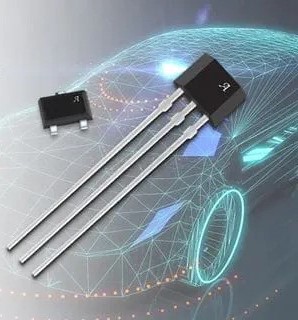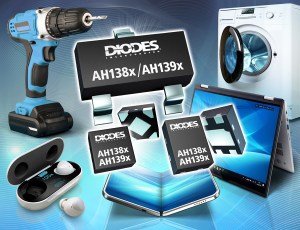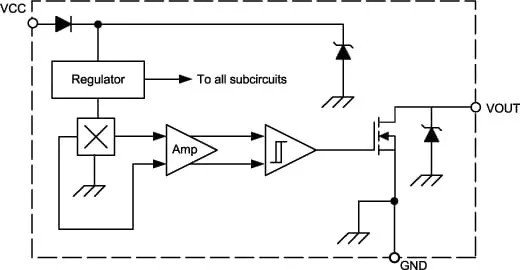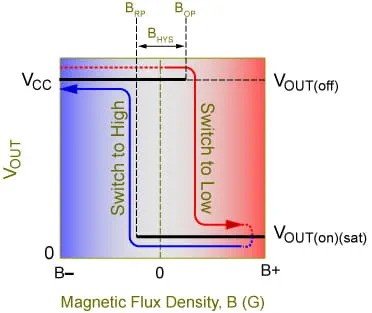Automotive applications such as advanced driver assistance systems (ADAS), window lift encoders, seat motors, seat belt tensioners and locking systems are largely driving their demand.
Hall-effect sensor ICs are also widely used in driver controllers for off-road vehicles, heavy equipment, human-machine interface (HMI) and rollover (bank angle) sensors, mounts, and two-wheeled vehicles. They facilitate the fastest diagnostics on magnetic switches and latches and provide logic-compatible outputs that can communicate sensor status and support open/short circuit detection on lines.

Figure 1 Hall-effect sensor ICs have extremely short fault detection times. Source: Allegro MicroSystems
Examples of Hall-effect sensor ICs from Allegro MicroSystems are the APS11450 unipolar switch IC and the APS12450 bipolar latch. Their magnetic sensors have integrated self-test functions that are always active in the background when the system is running, enabling extremely short fault detection times.
Automated tests that are transparent to the host system (transparent) can be performed quickly, typically within 25µs, even when latches are used in high-speed motors and encoders. In addition, unique voltage mode outputs communicate sensor status (including safety status) while maintaining backward compatibility with logic level interfaces, application circuitry, wiring and firmware.

Figure 2 Hall effect latches are AEC-Q100 Class 0 compliant, manufactured in an IATF 16949 certified facility, and support PPAP documentation. Source: Diodes Inc.
Diodes' AH371xQ family of high-voltage Hall-effect latches is also aimed at a variety of automotive applications. These Hall-effect latches operate from 3V to 27V and feature 40V load-surge protection. In addition, their chopper-stabilized design mitigates the effects of thermal variations and provides enhanced stray field immunity.
These automotive-compliant Hall effect latches have an 8kV human body model (HBM) electrostatic discharge (ESD) rating, and other protection features include reverse blocking diodes, overcurrent protection, and overvoltage clamp.
About Hall Effect Switches and Latches
Hall effect switches and latches (magnetic field comparators) compare the magnetic flux density with a pre-specified threshold value and output the comparison result as a 1-digit digital value. There are four types of Hall effect ICs that provide digital outputs: unipolar switches, bipolar switches, omnipolar switches, and latches.
Hall effect switches are commonly used in industrial and consumer applications that require digital on/off signals and high precision switching points for position sensing. Applications include security systems, alignment controls, pushbuttons, keypads, key switches and machine tools.

Figure 3 Hall-effect switches enable digital on/off signaling. Source: Allegro MicroSystems
Latching Hall effect sensor ICs (often called latches) are digital output Hall effect switches that latch the output state. They are similar to bipolar switches, but provide tight control over switching behavior. When the device is turned on, it latches to the state and remains on until an arctic (negative) magnetic field of sufficient strength is present, even if the magnetic field is removed.

Figure 4 Hall-effect latches are used to store signals. Source: Allegro MicroSystems
Latches are considered well suited for controlling brushless DC (BLDC) motors, which, unlike motors that use brushes, do not require mechanical contact for commutation. For example, latches can be used to accurately detect the rotor position of BLDC motors in air-conditioning systems, pumps, washing machines, DVD players and roller shutters.
In addition to BLDC motor control, latches are used for valve operation, linear and incremental rotary encoders, and position sensing functions. In automotive design, latches underpin a wide range of in-vehicle comfort and engine management applications, including power window up/down and sunroof movement, trunk open/close mechanisms, seat adjustment motors, cooling fans, water/oil pumps and speed measurement.
Related blog:Diodes Automotive Compliant Hall Effect Sensor



























